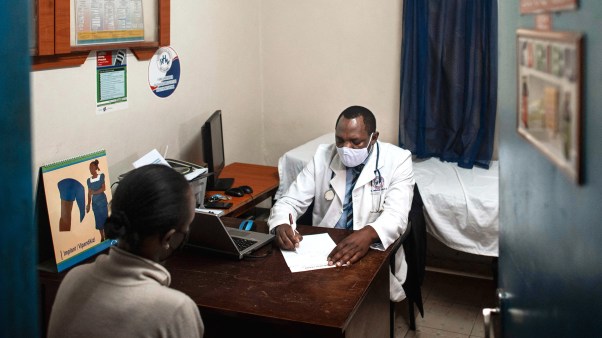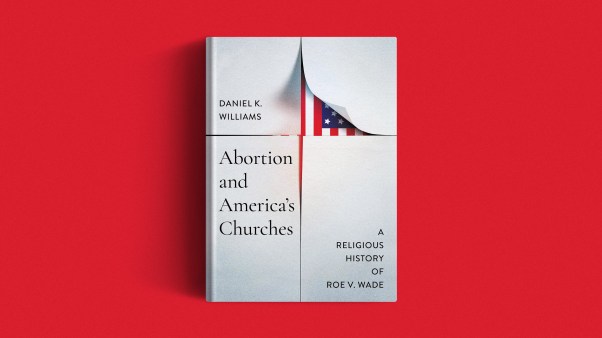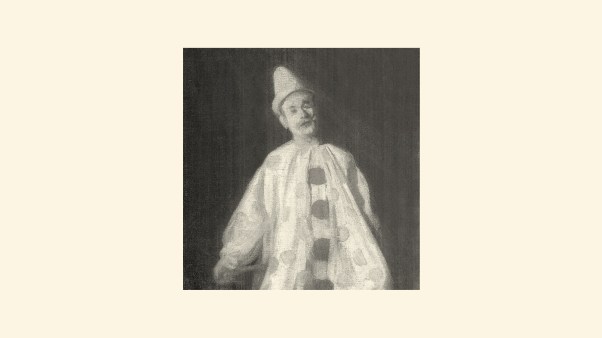In Montgomery, Alabama, eight days of evangelistic meetings with Billy Graham in mid-June produced a new potential for personal and social reconciliation in the estranged South.
The most explicit purpose of the racially integrated Montgomery crusade was to win individuals to Christ, and the 2,000 decisions recorded in the first five services reflected a bountiful harvest of changed lives. Some observers, moreover, were hopeful that the joint evangelistic effort of whites and Negroes in the “Cradle of the Confederacy” would conspicuously alleviate racial tensions.
Graham found the city resplendent with the bloom of crape myrtle, but Christians and unbelievers alike retained vivid memories of the historic racial tension in Selma and Montgomery three months before. The evangelist chose, therefore, not to issue any reminders. During the first part of the crusade he made only broad references to the race problem. The city proved generally tolerant of his stipulation of integrated seating, and the reaction of the local citizenry to this significant break in the segregationist pattern was surprisingly mild. The only occurrence to mar preparations for the crusade was the defacing of three billboards advertising the meetings.
“What is your god?” Graham asked the crowd at Cramton Bowl, the 24,000-seat stadium that is the site of the annual Blue-Gray football classic. “We all have something we believe in. You may even have a caricature of Christianity as your religion.”
The crusade began in the rain. A heavy, hour-long downpour delayed the start of the first service and soaked the crowd in the open grandstands. Hundreds left but about 8,000 stayed, and some struck up an impromptu song service while waiting out the rain. The service was held, and the sun eventually broke through to cheer the persevering.
After the rain of the opening day, most of the remainder of the week was cloudy and cool.
The weather was but one of the difficulties that had worried crusade organizers. All the preparations had to be completed in record time. “We had to do in six weeks what usually takes six months,” said Willis Haymaker, veteran organizer of evangelistic crusades. Graham’s choice of Haymaker to head the Montgomery effort was in itself a significant decision. The genial, 65-year-old Haymaker has laid the groundwork for scores of crusades dating back to Gypsy Smith in the 1930s. His experience and sense of diplomacy provided key ingredients.
The decision to hold a crusade in Montgomery was made in the early spring. As the racial crisis in March approached its climax, Graham dispatched three associates to Alabama. The team had received several invitations to hold a crusade, but it was unclear whether the interest of local pastors was intense enough to assure broad participation. Unanimous invitations from the two local ministerial associations convinced Graham. Several April meetings were scheduled in calmer areas of Alabama, and June 13–20 was set aside for Montgomery.
Would there be agitation from racists? Would white Christians refuse to participate side by side with Negroes? Where would committee meetings and planning sessions be held (the bi-racial crusade leadership was able to meet in few churches, for most white congregations still bar Negroes)?
The first public crisis was faced at the opening choir rehearsal. As the singers came in and took seats, they quite naturally segregated themselves. Pianist Tedd Smith broke the ice by sitting down with the Negro group and starting up a conversation. The mixing seemed to come easy after that, even though a white soprano complained that “I had to change my seat four times.”
Negroes outnumbered whites at the first choir rehearsal by about two to one. But more whites showed up as the crusade progressed. Eventually the race ratio in the choir, as well as in the audience, reflected remarkably well the whites’ two-to-one population edge over the Negroes in the city of Montgomery (population: 150,000).
Perhaps the most moving sights in Montgomery occurred at the close of each service, when white and Negro inquirers assembled to pray together on the Bermuda-grass turf in front of the platform. In a number of cases Negro Christians counseled whites who had responded to the invitation.
Such achievements will not easily be forgotten. National news media, however, took little notice of the crusade, and the outside world, which considers Montgomery a marked city, was left uninformed of the noteworthy advances. Montgomery is still best known for its resistance to racial integration, as a target of marchers, and as the place where the civil rights movement had its start with the bus boycotts in 1955.
Graham’s personal engagements in Montgomery included an 85-minute talk with Governor George C. Wallace, a Methodist, at the historic state capitol building (the first capitol of the Confederacy, where Jefferson Davis was inaugurated president). They talked over Coca-Cola, and the tee-totaling, cigar-chomping governor was invited to attend the crusade. Wallace did not immediately indicate whether he would accept the invitation.
During the week, Graham also addressed a special meeting of more than 200 ministers and laymen and a joint session of civic clubs with some 500 persons in attendance.
All in all, the people of Montgomery seem to be giving the Graham team a warm welcome. The rapport stemmed partly from the fact that the evangelist and his closest associates are themselves Southerners. More significant was the gentle, patient reliance upon persuasion.
Attendance at the crusade increased each day, from the 8,000 of the opening Sunday to 15,000 by Thursday evening. Graham challenged his listeners in the middle of the week to invite enough people to fill the stadium on the closing Sunday.
Among the special guests participating in the crusade were Miss Ethel Waters, Negro actress-singer famous for her rendition of “His Eye Is on the Sparrow”; Mrs. Cornelius Vanderbilt Whitney, noted socialite who became a devotee of the Bible study movement after her conversion at Graham’s New York crusade in 1957; and Miss Carol Self (see succeeding story).
Thousands of feet of movie film were taken of the Montgomery crusade and will be edited into a special documentary for public showing. A number of prints of the film will be sent to Great Britain for use before the opening of Graham’s second London crusade, scheduled for 1966.
The local leadership of the crusade in Montgomery was in the hands of a thirty-member, bi-racial executive committee headed by a chairman and three co-chairmen, one of whom was a Negro minister, the Rev. A. W. Wilson, of Holt Street Baptist Church. Dr. J. R. White, pastor of the First Baptist Church of Montgomery, was chairman. Dr. Robert Strong, minister of Trinity Presbyterian Church, was a co-chairman, along with Robbins Taylor, a layman who is vice-president of the Standard Roofing Company in Montgomery.
Dr. Frank Tripp, noted Baptist hospital administrator and fund-raiser, headed the arrangements committee.
The crusade drew whites and Negroes from a wide area of Alabama. Some came from Selma, fifty miles away. Most of the more than 300 churches in the area were represented in the nightly crowds. Among these was the Dexter Avenue Baptist Church, where Dr. Martin Luther King became famous. The church, located across the street from the state capitol, is currently without a pastor.
No one would prophesy that the crusade meant an end to street marches, fire hoses, and cattle prods. Demonstrations in the Deep South have stirred the consciences of some. They have intensified prejudice and hatred in others. One pastor said that many people in the Deep South now see all major ecclesiastical and political issues in the light of the race question.
Upon such matters, the crusade had no spectacular effect. One Graham aide, a native of Mississippi, did predict that the meetings would provide a new basis for communication which could mean progress for the future. “It’s only a small step,” he said, “but it was worth taking.”
A Candid Confession
A comely coed, standing before a crowd of 17,000 at Cramton Bowl, candidly confessed to religious misgivings just hours before she took the platform.
Miss Carol Self, a junior at the University of Alabama, had been invited to give a Christian testimony to the youth-night crowd at the Billy Graham crusade in Montgomery, Alabama. That afternoon, however, she tearfully admitted to Dr. W. Stanley Mooneyham, a Graham team member, that she really had nothing to say, that she had fallen victim to a succession of doubts.
As she described it, “I had dedicated my life when I was sixteen and I was completely on fire for the Lord. But in college I began to have doubts. I even went through a period of atheism.”
Mooneyham, an ordained minister and moderator of the National Association of Free Will Baptists, offered sympathetic counsel that afternoon, and Miss Self, a Methodist, seemed convinced at last.
When Mooneyham left, Miss Self recalled, the doubts returned. “I thought he had brainwashed me. I felt that I was just fooling myself.
“I said, ‘Okay, God, you better send him back,’ and about that time he knocked on the door.”
Miss Self, winner of a campus beauty contest, closed her testimony on a note of triumph, asserting that she had finally exercised her faith:
“I tried it,” she drawled. “Now I’ve got it.”
‘The Restless Ones’
An unusual plea in behalf of a new film appeared in the June issue of Decision. published by the Billy Graham Evangelistic Association.
Here is an excerpt from the plea by Dr. Sherwood E. Wirt, editor of Decision:
“I want the people in the church to see it.
“I want the people who never go to church to see it.
“I want some of our avant-garde clergy of Britain and America to see it—men like John Robinson and Erik Routley and George Target and Ted Gill and Malcolm Boyd and Harvey Cox and Don Benedict.
“I want Lyndon Johnson to see it.
“I want to have it shown in Portsmouth, New Hampshire, and Seaside, Oregon, and Fort Lauderdale, Florida, and Newport, Rhode Island, and Selma, Alabama.
“I want it shown in the Greek Theatre of my alma mater, the University of California in Berkeley.
“I want the Gold Coast crowd on the Australian beaches to have the chance to see ‘The Restless Ones.’ And the Mods and Rockers at Blackpool and Brighton in England.
“I want the night lifers swarming the top of the Montmartre in Paris every night to have a look at it.…
“This is a picture that tells the world the truth.”
The 105-minute film produced by World Wide Pictures focuses upon the teen problem. It was shot against the backdrop of the Billy Graham evangelistic crusade in Los Angeles. Premieres are scheduled for mid-September.
After The Earthquake, Two Schools
“The tragedy in Alaska is that we have not been producing spiritual leadership,” says the Rev. John M. Gillespie, general director of Arctic Missions. In an effort to meet the challenge, two new Bible schools are to be established next year, one by Arctic Missions and one by Central Alaskan Missions.
Arctic Missions, whose headquarters is in Anchorage, will add a Bible institute to its high school near Palmer at a minimum cost of $65,000. The high school now has sixteen students. A number of its future graduates are expected to choose to continue their training at the new institute.
The thrust of the mission is toward the interior. Gospel teams sent to isolated interior areas have reported a number of conversions, says Mr. Gillespie.
Central Alaskan Missions has allocated eighty acres of land adjoining its headquarters at Glennallen for a Bible college. Each student will carry a Bible major. He will have the option, however, of a three-year diploma course, a four-year degree course, or a business course.
CAM’s priority project last year was a 5,000-watt radio station, which was completed just twelve hours before the Good Friday earthquake struck. The station did emergency duty for five days, then signed off to await final clearance from the Federal Communications Commission. “In all probability, KCAM is the only radio station to begin broadcasting as the result of an earthquake,” says a spokesman.
The Rev. Vincent J. Joy, CAM director, says that the freshman program for the new Bible college will begin in 1966 and that other classes will be added in succeeding years. Construction costs for the first year are being tentatively estimated at $100,000.
Free Time And ‘Freethought’
The Federal Communications Commission advised Mrs. Madelyn Murray last month that she is not entitled to free time from thirteen radio and television stations in Hawaii to reply to their broadcasts of religious services.
Mrs. Murray, who initiated a case against recitation of the Lord’s Prayer in public schools that led the Supreme Court to hold such religious exercises in the classroom unconstitutional, now resides in Honolulu. She complained to the commission that the stations carried from two to twenty-eight hours of religious broadcasts a week but denied her organization public service time for a program to present “freethought,” which she described as “the opposite of religion in every respect.”
The commission, in a brief letter to Mrs. Murray, said that the stations had been asked to reply to her charges and that they told the FCC that “freethought” is not “a sufficiently controversial issue of public importance in their respective service areas to warrant presentation.” The stations also said that they believe “the mere broadcast of church services, devotionals and prayers is not the presentation of a controversial issue of public importance within the meaning of the fairness doctrine.”
The commission said it could find no fault with these replies. The licensee, they said, is required only to make a “reasonable judgment in good faith” on the merits of each situation “as to whether a controversial issue of public importance is involved.”
The FCC said its task in passing on any complaint is not to substitute its own judgment for that of the station owners but merely “to determine if the licensee can be said to have acted reasonably and in good faith.”
On the basis of the facts presented, the commission members told Mrs. Murray that they believed the stations acted with reasonable judgment in granting her occasional appearances on free public service time but denying her any regularly scheduled program.
GLENN D. EVERETT
Ncc On Right-To-Work
The National Council of Churches drew fire last month when it entered the political debate over right-to-work laws and threw its weight in congressional hearings for repeal.
Prior to the testimony of Dr. J. Edward Carothers, secretary of the council’s Commission on the Church and Economic Life, nearly a hundred clergymen sent protest telegrams to members of the subcommittee-holding the hearings.
“No person may presume to speak on this issue on behalf of the Council’s membership, inasmuch as member congregations have not been polled on the repeal or retention of Section 14 (b),” the clergymen said.
This section of the Taft-Hartley Act authorizes the states to outlaw labor-management agreements requiring employees to pay dues to unions as a condition of continued employment.
Dr. Carothers said that he made no claim to speak for the 40 million members of the NCC-affiliated denominations, but he also said that the NCC General Board supported the repeal of the right-to-work provision and that the board was broadly representative of member churches.
Nineteen states have “right-to-work” laws. They are favored by many leading churchmen (who regard enforced union membership as an impingement on workers’ rights) and by several religious minor ity groups (such as the Mennonites, Amish. Seventh-day Adventists, Christian Reformed, Protestant Reformed, and Plymouth Brethren) who oppose joining unions on grounds of conscience. Several churchmen testified for these minority groups.
Ncc: Between Church And World
What distinguishes a church organization from a secular agency? With “the world” registering so much influence on the program of the National Council of Churches, officials of that far-flung organization are beginning to ask that question aloud.
To members of the NCC General Board gathered in New York for their June meeting, General Secretary R. H. Edwin Espy suggested that the council should be careful not to lose its unique place in American life.
The council has been consciously increasing its involvement in “the life of the world” in recent years, Dr. Espy reminded board members. On the other hand, he continued, “there is a subtle sense in which the life of the world makes many of our decisions for us.” “There is scarcely a program of the National Council that is not affected, consciously or unconsciously, soundly or mistakenly, by the impingement of the world,” the general secretary said.
Secular life is shaping a new role for the NCC, from one end of the organization to the other, Dr. Espy told the board; the council “has become a new factor in the life of the nation.” Various government agencies, private organizations, institutions, and individuals are coming to the NCC for answers to their questions about religion, he reported. And churchmen of every rank and stripe are coming to the council for a word on the world. The NCC’s chief executive said this might suggest for the organization a role of “mutually recognized central telephone operator” through which church and world could call each other.
Beside the practical reasons put forward by NCC officials for council involvement in secular affairs, are there also theological ones? In bringing this question before the board, Dr. Espy said it may now be time to re-examine what have been the “common theological assumptions” of NCC personnel.
“For the most part heretofore we have assumed that we have these common assumptions,” he told the policy-makers. “But the world may be getting us into trouble not only practically but theologically.”
Will the NCC be forced to develop a theology of its own, over and above the theologies of its thirty member denominations? The question is being seriously discussed. Can the council continue without more than the minimum statement now in its constitution?
At this point there is “a certain ambivalence in our expectations of the ecumenical movement,” Dr. Espy reminded the board members. On one hand, he said, “it is not appropriate” for the council to have a theology if it is to represent a variety of denominations with creeds of their own. On the other hand, “it is not possible for it to represent the churches soundly and effectively without some common theological assumptions.”
The board, which had asked for some kind of theological study of secular involvement at its meeting last December, listened with interest. No formal action was taken. The general secretary said only that the requested study is “under way.”
Entering a new field of political activity, the board approved a policy statement opposing the proposed Dirksen amendment or any other plan that would change legislative apportionment procedures. The debate over the issue drew to the microphones some of the council’s top leaders. David B. Cassat, a United Presbyterian layman from Iowa who is council treasurer, made a rare speech against “the establishment” and the proposed statement. Quick to defend the document, however, was his denomination’s stated clerk, Eugene Carson Blake.
When the question was called, only 100 of the more than 250 board members registered a vote. The tally was 77 for the statement, 16 against, and 7 abstaining.
The vote pointed up a problem brought before the board by one of its member denominations. At its April General Assembly, the Presbyterian Church U. S. asked the NCC to amend its rules to provide that at least half the board members would have to record votes before a policy statement could be enacted. In answer, the board reaffirmed its current procedures “as being a responsible representative form of government.” Present rules for adoption of policy statements require the affirmative vote of two-thirds of the board members present and voting. However, as little as one-fourth of the total board membership can enact a policy statement.
Board members indicated that they were aware of mounting criticism over pronouncements. After much debate, the second resolution on Viet Nam in as many board meetings was passed. The document reaffirmed the February action calling for negotiation and asked the government to reappraise its policy, particularly the bombing of North Viet Nam. Suggestions that the NCC policy-makers were not competent to advise the government on such specifics were pushed aside as the resolution was approved by a loud voice vote.
Speaking out on another trouble spot where American troops are involved, the board associated itself with a cable sent from one of the NCC divisions to Santo Domingo “questioning our government’s unilateral military action and insensitivity to the implications of such action.…”
The board, meeting at New York’s interdenominational Riverside Church, also:
—Approved a resolution on world hunger, asking the government to change a number of its policies to provide more food for the undernourished.
—Sent to the churches a message on “Christian Responsibilities for Education Through the Week,” calling for support of public schools, for teaching “about” religion in the schools, and for more effective Christian education within the churches.
—Authorized a national-level “working group” to consider possible collaboration with the American Roman Catholic Bishops’ Commission for Ecumenical Affairs, and seated the first official Roman observer at a board meeting, Msgr. William W. Baum, executive director of that commission.
ARTHUR H. MATTHEWS
Antidote For Smut
Across this country there are 55,000 drugstores, as familiar to the American way of life as baseball or apple pie. One out of five of these drugstores is identified as a Rexall store, and this month many hundreds of the 11,000 Rexall stores have a new sign on their newsstands. The sign invites the customer to call any objectionable material to the druggist’s attention, with the promise that it will be removed.
A strictly voluntary effort, the program has met mixed reactions. Ministerial groups, parent-teacher associations, and the like are overwhelmingly enthusiastic. But in some cases the refusal of the druggist to accept objectionable publications brought an ultimatum from the distributor that he take everything or nothing. And in some communities the Rexall druggist announced that his newsstand was empty, because he was sticking by his convictions.
Asks druggist Harry Powell, president of the International Association of Rexall Druggists: “Do we have any more right to allow the poisoning of the mind than we do the poisoning of the body?” Parent of teen-agers himself, Powell conceived the idea and has paved the way by cleaning up the newsstands in his five Southern California stores.
Ataturk Undone
Although the bells of scattered Orthodox churches still sound out every Sunday morning in ancient Istanbul, it is the city of mosques—nearly 2,000 of them. Most famous of all religious edifices there is the Cathedral of St. Sophia, which was a part of Orthodoxy till the Ottoman triumph of 1453, when it was turned into a mosque. This church with its striking Byzantine features is regarded as having had a greater influence on the history of art than any other single building. Kemal Ataturk (1881–1938), father of modern Turkey, converted it into a museum and center of archaeological work.
A few weeks ago, out of the anniversary celebrations for the Islamic conquest of Istanbul there arose demands that the building once more became a mosque. A meeting organized by those advocating this significantly closed with a special prayer for the soul of the conqueror, Mohammed II.
Here is signified the fundamental division among the Turks at the present time. The religionists hold that Ataturk’s reforms damaged the cause of Islam; the progressives (including most intellectuals) support the reforms. Ataturk had decreed that the Koran be read, and the call to prayer given, in Turkish instead of Arabic; vote-seeking politicians have now restored Arabic. Pilgrimage to Mecca was formerly prohibited; Turkey today of all the Muslim states sends probably the greatest number of pilgrims—and millions of precious dollars sorely needed for internal economy are annually carried out for no tangible return.
Continuing disagreement about educational methods instituted by Ataturk has resulted in a national illiteracy figure of 60 per cent, but since his death in 1938 the mosque-building business is booming. The trend is thus reflected in the Istanbul daily Cumhuriyet for May 31, 1965, under the headline: “4,130 men of religion are trained each year, and 500 agriculturists.” Commented an agricultural expert: “Who will undertake the development of the country, we or the priests?”
Evidence suggests that the priests have a clear lead at the moment (a fact not unrelated to the parliamentary elections scheduled for October) and that Ataturk’s power is fading. He strictly forbade polygamy; today it is widespread. He separated church and state, but the religionists have made great strides in their aim to restore a thoroughly Islamic constitution.










